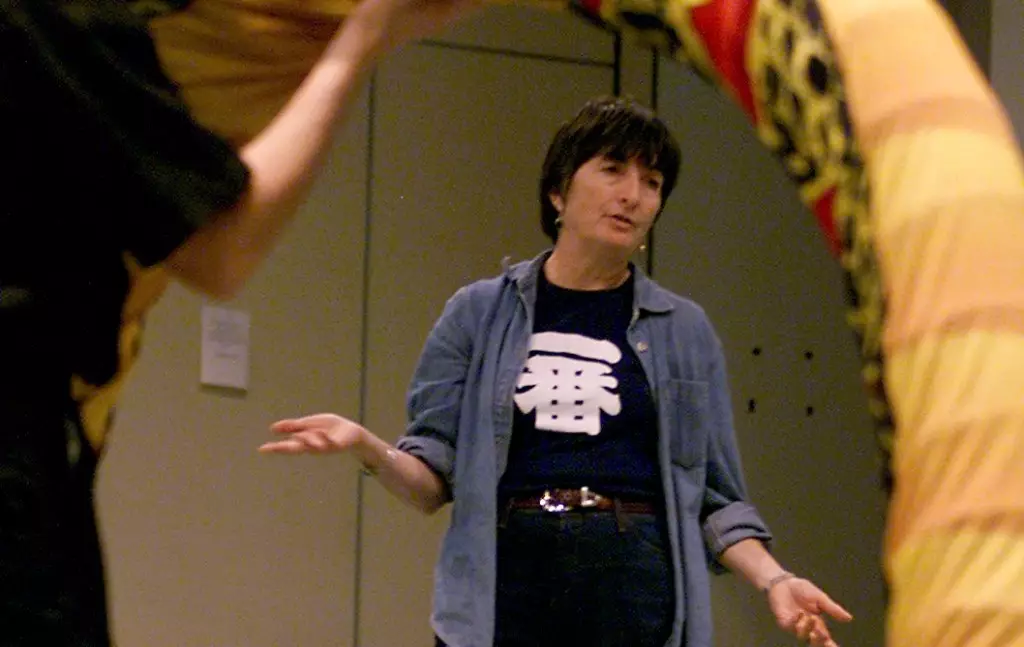Lynne Taylor-Corbett, an influential figure in the world of choreography, passed away on January 12 at a New York hospital, succumbing to breast cancer at the age of 78. Known for her remarkable contributions to both Broadway and Hollywood, Taylor-Corbett’s legacy is particularly marked by her role in shaping memorable dance moments, including the unforgettable solo performance by Kevin Bacon in the iconic 1984 film “Footloose.” Her passing has left a significant void in the dance community, as she was instrumental in redefining choreographic expression across various mediums.
Born on December 2, 1946, in Denver, Lynne Aileen Taylor exhibited a passion for dance early in her life. Following her graduation from high school, she transitioned to New York City to study at the prestigious School of American Ballet. Although her aspirations to become a ballet dancer did not materialize—her own reflections highlighted a disconnection between her skills and the rigid demands of classical ballet—she soon recognized her unique talent for theatrical movement. This realization set the stage for her extraordinary career in choreography that would bridge the worlds of theater, film, and television.
By the early 1980s, Taylor-Corbett had already begun carving her niche in the choreographic landscape. Her work with esteemed organizations like the American Ballet Theatre and City Ballet showcased not just her technical skills but her ability to evoke emotion through movement. Commissions from prominent dance companies, such as Alvin Ailey American Dance Theater, further established her as a versatile and sought-after choreographer.
Taylor-Corbett’s Broadway debut came in 1981 with “Shakespeare’s Cabaret.” She quickly returned to Broadway with “The Boys of Winter” in 1985, but it was her work on the short-lived musical “Chess” in 1988 that garnered her more considerable attention. While it did not achieve longevity on stage, her ideas and interpretations significantly impacted audiences and future productions, illustrating her capability to innovate within theatrical storytelling.
In 1994, she showcased her choreography for “Sally Marr…And Her Escorts,” which starred comedy legend Joan Rivers, further highlighting her adaptability. Taylor-Corbett’s most memorable theatrical contribution arguably came with the 1997 Broadway musical “Titanic,” where her choreography was pivotal to the show’s emotional depth.
While Broadway was a significant part of her career, Taylor-Corbett was equally active in Hollywood. The breakthrough came with “Footloose,” where she engineered one of the defining dance sequences of the 1980s. The film not only propelled Kevin Bacon into stardom but also solidified her status as a choreographer adept at creating dynamic and engaging dance numbers that resonate with wider audiences. This success paved the way for her involvement in several other films, including “My Blue Heaven,” “Vanilla Sky,” and “Bewitched,” where her choreographic expertise continued to influence the portrayal of dance in cinema.
Beyond her film achievements, Lynne Taylor-Corbett returned to Broadway with the acclaimed musical revue “Swing!” in the late 1990s. The production showcased classic jazz swing songs and created a vibrant atmosphere that celebrated the joy of dance. Her ability to blend musicality with narrative movement earned her nominations for both choreography and direction, marking a significant high point in her illustrious career.
The contributions of Lynne Taylor-Corbett transcended the confines of stage and screen, weaving her identity into the very fabric of American dance culture. Described by colleagues and friends as a visionary, her understanding of movement and dramatic storytelling fostered a new era of choreography that went beyond traditional techniques.
She is survived by her son, Shaun Taylor-Corbett, along with several siblings, who now carry forward her legacy. As the art world reflects on Taylor-Corbett’s life, it becomes evident that her innovative spirit and passion will continue to inspire future generations of dancers and choreographers, ensuring her influence is felt long after her passing. The breadth of her work has not only enriched the dance community but has also transformed how narratives are expressed through movement, leaving an indelible mark on all who were fortunate enough to witness her art.

